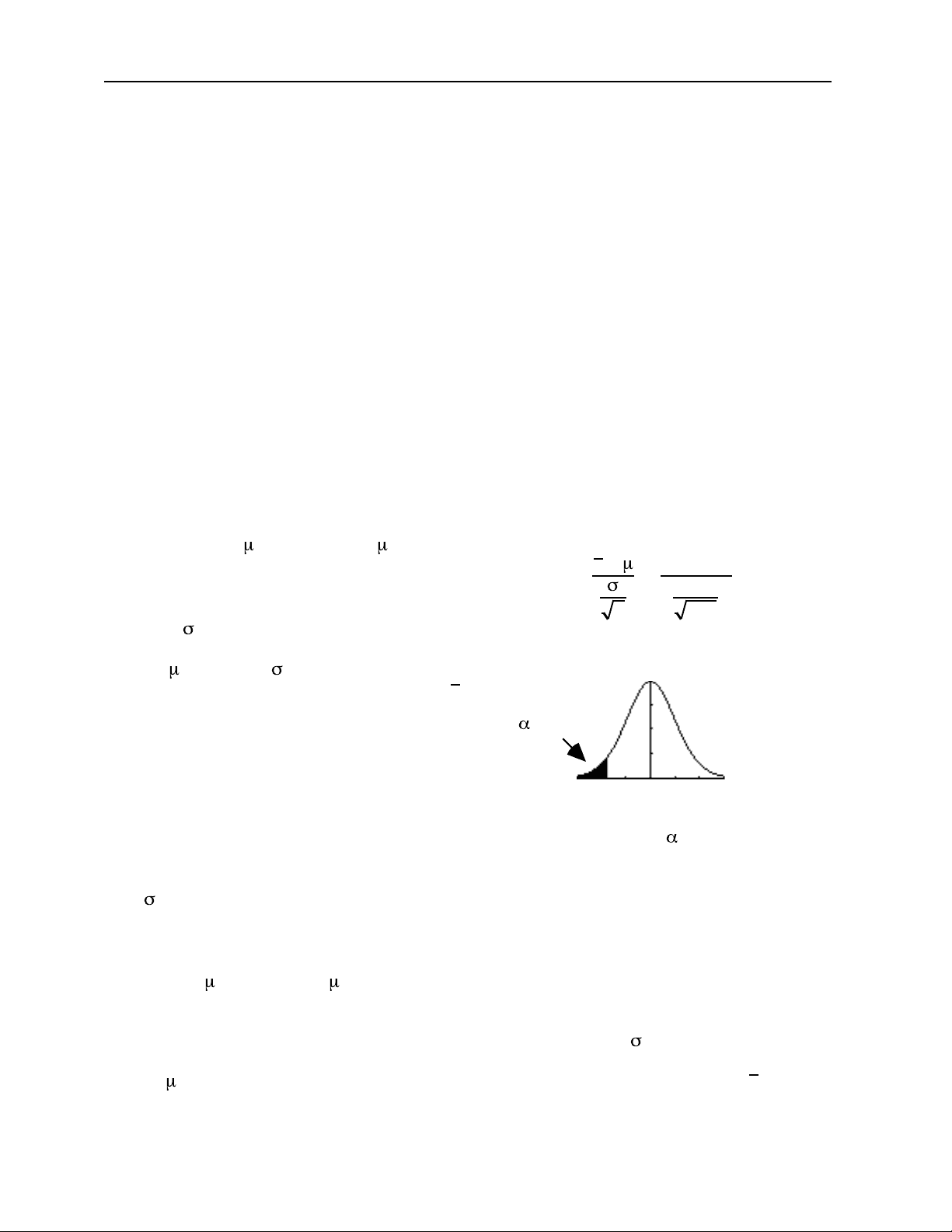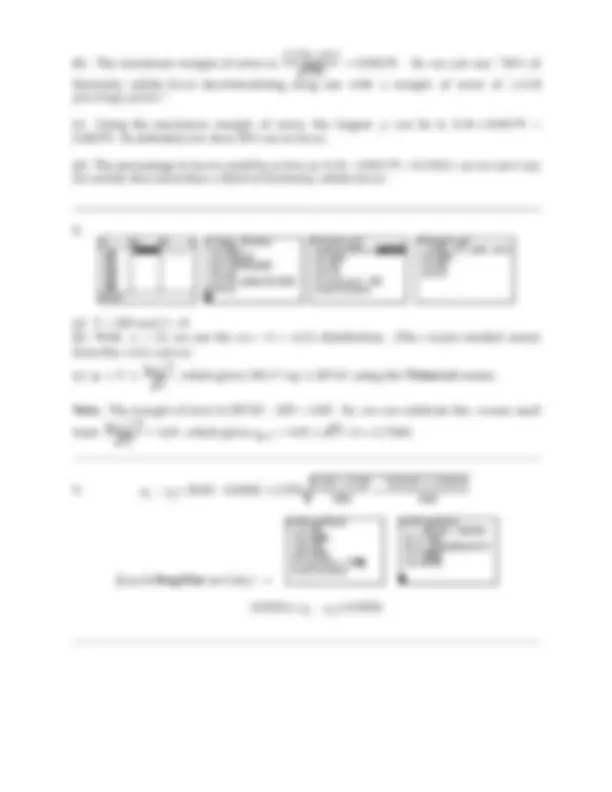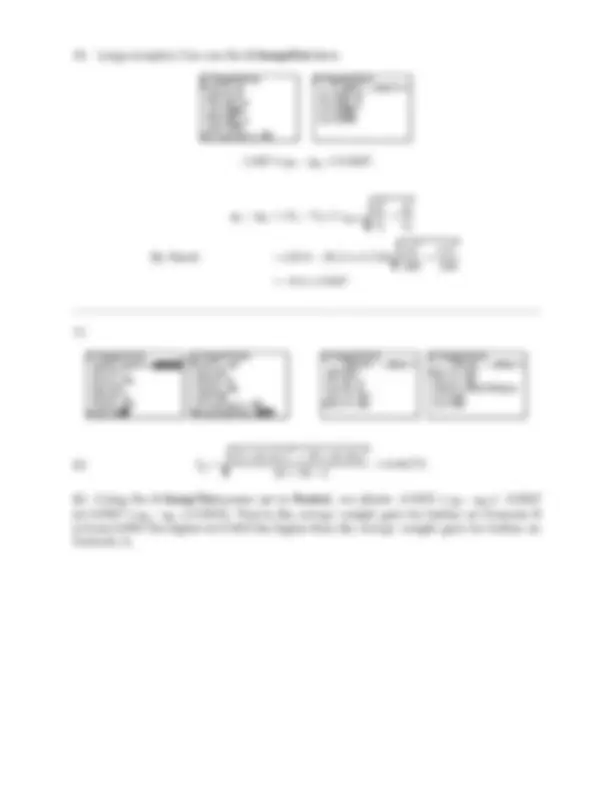




Study with the several resources on Docsity

Earn points by helping other students or get them with a premium plan


Prepare for your exams
Study with the several resources on Docsity

Earn points to download
Earn points by helping other students or get them with a premium plan
Community
Ask the community for help and clear up your study doubts
Discover the best universities in your country according to Docsity users
Free resources
Download our free guides on studying techniques, anxiety management strategies, and thesis advice from Docsity tutors
Solutions to test 2 of math 203, focusing on statistical inference and hypothesis testing. Topics covered include z-tests, t-tests, confidence intervals, and margin of error calculations.
Typology: Exams
1 / 4

This page cannot be seen from the preview
Don't miss anything!



The percentage of patients for whom Treatment B worsens the condition is from 2. percentage points higher to 5.2 percentage points higher than the percentage of patients under Treatment A.
(Without re-writing the interval: The percentage of patients for whom Treatment A worsens the condition is from 5.2 percentage points lower to 2.4 percentage points lower than the percentage of patients under Treatment B.)
(b) It is clear that Treatment B has the higher percentage of patients with a worsening of the condition.
(b) We can use a Z–Test because the measurement is normally distributed and = 2 is known.
(c) z =
x −
n
(d) If = 25 and = 2 were true, then there would be no chance of getting an x of 24.2 or lower with a sample of 400 cars. We can reject H 0.
(f) Because we have a large sample , we can still use the Z–Test even if the measurement were not normally distributed. Also, because of the large sample, we can use S as an approximation for and still use the Z–Test.
–1.
(e)
= 0.
curve
Use –1.96 for = 0..
(c) If = 6 were true, then there would be an 11.9% chance of getting an x of 6.3 or
higher with a sample of size 36. There is not enough evidence to reject H 0.
(d) n = 36, use t (35) curve
(e) t =
x − S n
The test stat of 1.2 is not in the rejection region beyond 1.690; so x is not too large and there is not enough evidence to reject H 0.
(a) Test H 0 : p = 0.60 vs. Ha : p > 0.
(b) z =
p − p p × (1 − p ) n
= 1.9365 (^) (c) 1.
curve
Use 1.96 for a 2.5% level of significance.
(d) If p = 0.60 were true, then there would be only a 2.64% chance of obtaining a p of
0.63 or higher with a sample of size 1000. We can reject H 0 because the P -value is less
than 0.05. (Also, the test stat of 1.9365 is in the rejection region beyond 1.645.)
(e) For = 0.025, the test statistic of z = 1.9365 is not in the rejection region beyond 1.96 (so the P -value is more than 0.025). Thus, with a 2.5% level of significance, p = 0. would not be considered too large and we would not have enough evidence to reject H 0.
z (^) /2 × 0. e
2 = 909.254438 ; a sample of size 910 is required.
(b) n ≥
= 604.322 ; so now we only need a sample of size 605.
= 0.36. Then p ≈ p ±
z (^) /2 p (1− p ) n
0.36 ± 0.04. That is, 0.32 ≤ p ≤ 0.40. (Can use the 1–PropZInt to compute the confidence interval with this formula.)
With max margin of error: p ≈ p ±
z (^) /2 × 0. n
By Hand:
1 −^2 ≈^ ( x 1 −^ x^ 2 )^ ±^ z^ /
n 1
n 2
(a) Sp =
(b) Using the 2–SampTInt screen set to Pooled , we obtain –0.5433 ≤ 1 − 2 ≤ –0.
(or 0.0567 ≤ 2 − 1 ≤ 0.5433). That is, the average weight gain for babies on Formula B is from 0.0567 lbs higher to 0.5433 lbs higher than the average weight gain for babies on Formula A.